Deliberative vs. reactive control
NASREM
- The standard deliberative control architecture
NASREM = NASA standard reference model for telerobot control system
architectures.
NASREM = conceptual and functional architecture for the control system
architectures.
The control system
The control system is a
- three-legged system of computing modules serviced by
- a global memory
- communication system,
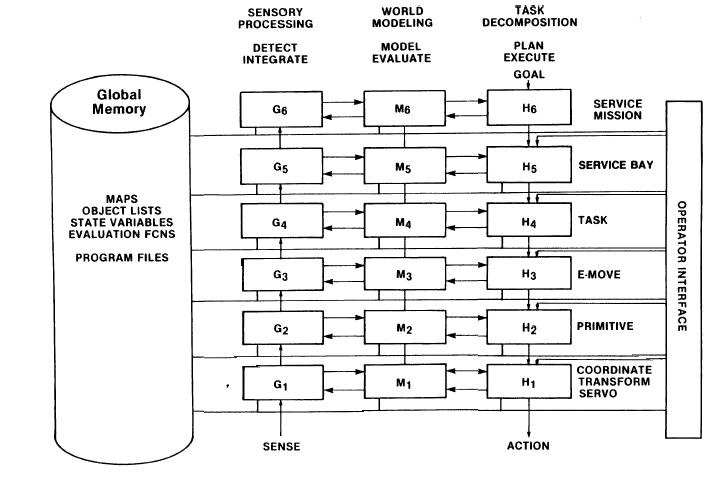
The levels are
- Servo: provides servo (motor) control for the actuators.
- Primitive: Provides motion primitives to generate smooth trajectories.
- Task: Decomposes actions on a single object into sequences of elemental
moves.
- Service bay: Converts actions on groups objects into sequences of tasks on
single objects.
- Service mission: Overall high mission plan converted into command for the
service bay.
The modules are
- Task decomposition: Plans and executes the decomposition of high level
goals into low level actions. Decomposition is both
- temporal - into sequential actions along the time line and
- spatial - into concurrent actions by different subsystems
- World modeling: Consisting of
Model = best estimate and evaluation of the history, current,
and possible future states of the world.
Knowledge base: Contains state variables, maps, lists of
objects and events and their attributes.
- Sensory processing: Reads sensor values and provides the filtered and
processed values to the world model. Moreover the controller is equipped with
an
- Operator interface: Provides a means by which human operators can observe
and supervise the robot. Task commands into any level of the hierarchy can be
either from the higher level task decomposition module, from the operator
interface or both. Human interference is possible at each level of the
hierarchy. Human and autonomous control can be simultaneous. The operator
interface is not present if the robot is working autonomously.
The timing of the tasks
Are each hierarchical level
- planner modules decompose task commands into strings of 2 - 10 planned
subtasks for execution.
- strings of sensed events are summarized, integrated, and "chunked"
(zusammenklumpen) into single events at the next higher level.
Time horizon increases by an order of magnitude at each level of the
hierarchy -> exponential increase in time.
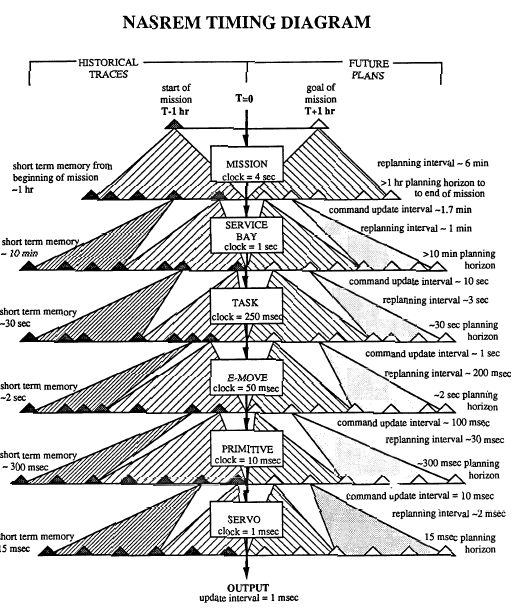
Hierarchical planning
The principle of hierarchical planning: Higher levels in the hierarchies
create sub goals for the lower levels
The picture shows the exponentially increase of time with the number of
hierarchy steps.
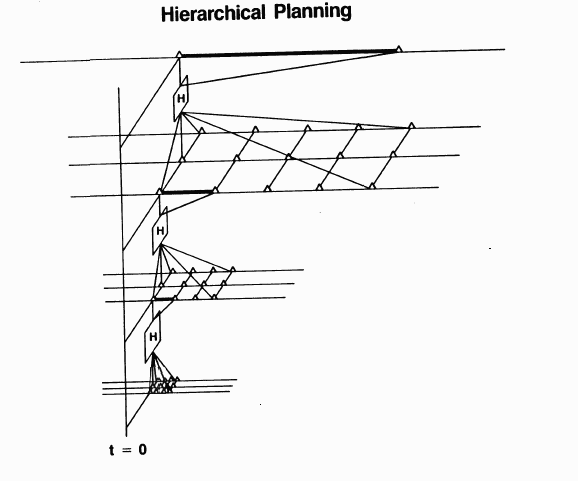
General remarks on hierarchical control
Hierarchical control well suited for structured and highly predictable
environments (manufactures).
Additional material:
Shakey - one of the first mobile robots with planning (STRIPS
planning system was developed for this robot).
Moved in an laboratory world. Could identify and manipulate (move)
objects.
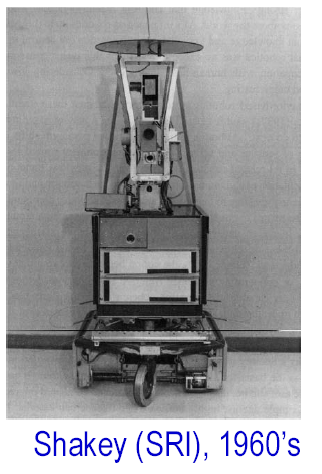
Reactive control systems
Reactive control:
- Direct coupling of perception and action.
- Aim is timely robotic response in dynamic and unstructured worlds.
- Typically in the context of motor behaviors.
Reactive control architectures will be discussed on more detail with the
behavior based control architectures.
The three major control paradigms
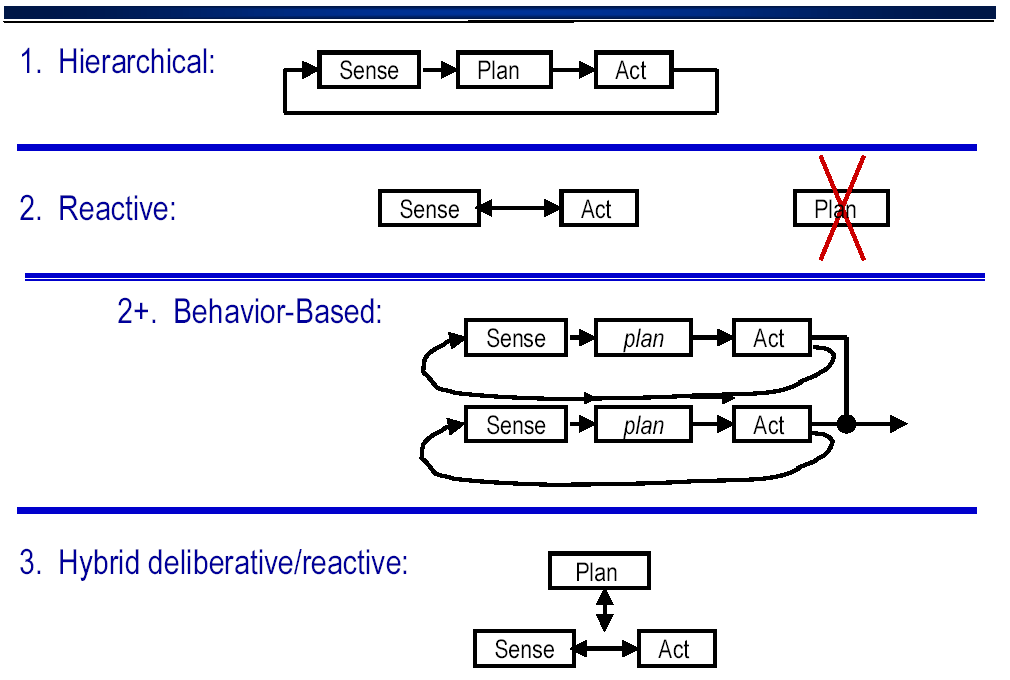
According to Arbib the architectures are characterized by the following
scheme:







